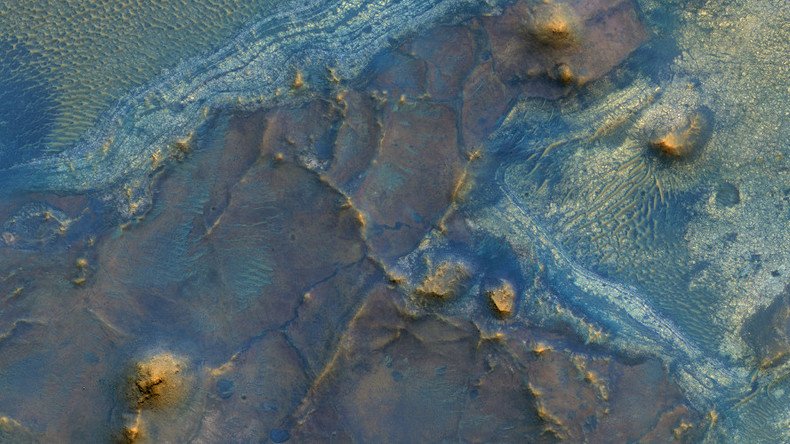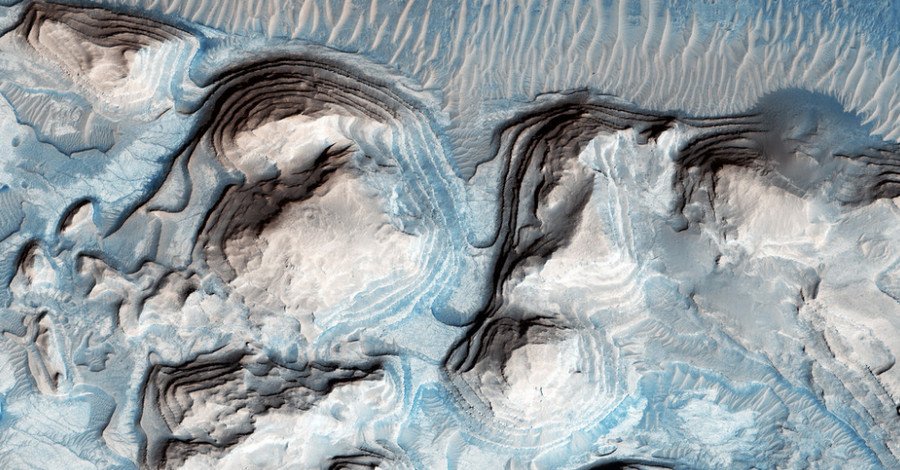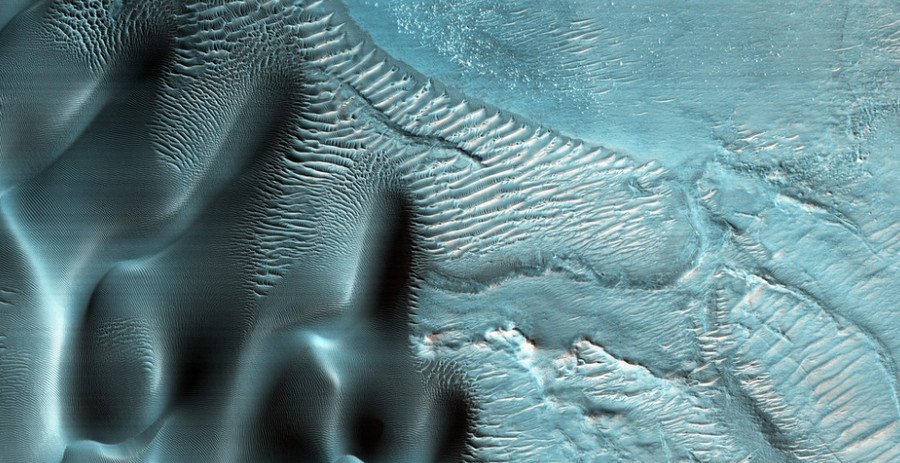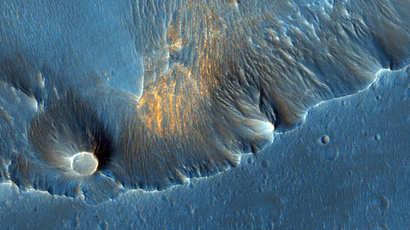Red is not its only color: NASA captures Mars you’ve never imagined (PHOTOS)

Vibrant pictures taken by NASA’s Mars Reconnaissance Orbiter reveal Nili Fossae, Mars’ northwest region, as one of the most colorful spots on the Red Planet. Check it out for yourself.
Under its red sand shroud, #Mars' bedrock is a blue surprise. This is the Nili Fossae region, pictured by @HiRISEpic.twitter.com/NqhN9SePO7
— Marco Tinè (@StriderCT) May 6, 2016
The mesmerizing image was captured by the High Resolution Imaging Science Experiment (HiRISE) camera installed on the Mars Orbiter.

Many Martian regions appear smoothed by dust and regolith, but in this stunning pic we see the Nili Fossae bedrock very well exposed, except for spots where there are sand dunes.

This and other breathtaking pictures from Mars Orbiter show diverse compositions on the layered bedrock formed by the region’s complicated and interesting geology history.

These compositions produce different colors in HiRISE’s infrared-red-blue color images, like the beautiful shades of blue and beige in the one you see here.
The variety of colors is produced by the presence of minerals – such as carbonate, aluminum smectite, hydrated silica, and iron oxides – in Mars’ crust
A NASA spokesperson said the Orbiter’s next step will be to inspect the region further in search of signs of life that might once have existed there.
“Nili Fossae Trough is a huge crack in the surface of Mars,” the NASA spokesperson explained.
“The region has one of the largest, most diverse exposures of clay minerals [that] contain water in their mineral structure and may preserve organic materials. Scientists are excited about studying such deposits to understand past environments that could have supported life.”













